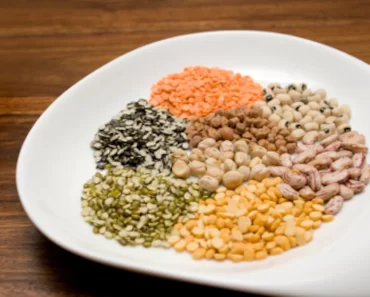Malgré la grande variété et la disponibilité des aliments, les carences en certains nutriments sont plus fréquentes qu’on pourrait le croire.
Soyons raffinés… dans nos goûts seulement!
Les besoins en nutriments ne sont pas comblés lorsque l’alimentation est riche en ingrédients raffinés tels que le sucre, les matières grasses, la farine blanche, les boissons et les produits sucrés. Ils ne peuvent non plus être satisfaits lorsque l’alimentation est pauvre en produits céréaliers de grains entiers, en légumineuses, en fruits et légumes ou encore lorsqu’elle comporte peu de produits laitiers (calcium) ou de viande rouge (fer).
Fatigue, weakness… lack of iron?
Iron deficiency anemia is the most common nutritional deficiency in the world. And in Canada, three out of four women don’t get enough iron. Consequences: fatigue, weakness, and loss of productivity at work and at home. Iron is essential for the production of the body’s primary source of energy and it ensures the transport of oxygen to all the cells of the body. But before opting for supplements, it is better to focus on a diet rich in iron. Women of childbearing age, pregnant women, teenage girls, and growing children are among those most at risk of developing iron deficiency. Important: Experts advise against supplements unless there is a clearly diagnosed deficiency.
Where do we find iron? Heme iron – more easily absorbed – is found in red meat, poultry, fish and seafood. Dried fruits, molasses, whole grains, legumes, green vegetables, nuts and seeds also contain iron, but in a non-heme form. To promote the absorption of the latter, meals are accompanied by a source of vitamin C (citrin fruits, peppers, cabbage, etc.) or a source of animal protein (meat, poultry, fish). On the other hand, we will see to take coffee or tea between meals rather than with meals since the tannins they contain interfere with the absorption of iron from the meal. A vitamin is Important!
More and more scientists believe that the recommended dietary intake (RDA) of vitamin D should be increased, particularly in people living in latitudes where the sun is rarer in winter as well as in the elderly, who produce four times less vitamin D in the skin than adults aged 20 to 30! In children, vitamin D deficiency leads to rickets (deformation of the skeleton), and in adults, osteomalacia (lack of mineral in the bone) or osteoporosis (porous bone).
In addition, according to the latest research, it seems that people with the lowest vitamin D content have twice the risk of suffering a heart attack, heart failure, or stroke (stroke) than people with vitamin D. higher content. There is also a link to be made between vitamin D deficiency and an increased risk of colon, breast or prostate cancer in people living at high latitudes.
Where is vitamin D found? Vitamin D is present in the flesh of fatty fish, in certain fish liver oils and in the eggs of hens that have consumed vitamin D (which is however difficult to know, unless we buy our eggs from a local producer who can tell us). It is added to all types of milk and margarine.
However, according to the Canadian Cancer Society (CCS), among others, Canadian adults should take a vitamin D supplement of 25 mcg (1000 IU) every day, at least during the fall and winter. While those at higher risk such as the elderly, people with dark skin, those who rarely go outdoors, or who always wear full-coverage clothing should take a supplement year-round. On the other hand, exposure to sunlight can provide 80-90% of needed vitamin D. Exposure of the hands, forearms, and face for only 10 to 15 min, between 11 a.m. and 2 p.m. (two to three times a week) would be sufficient to ensure an adequate intake for a healthy adult. Beyond 15 min of exposure to the sun, we take out our sunscreen! Dry skin, brittle nails, dull hair…
All of these symptoms are the manifestation of protein deficiency. Rather surprising when you think of the abundance of food in which we live! For example, following a severe weight loss diet will lead to such a deficiency. Since the body cannot store protein, it is necessary to consume it with each meal.
Thus, the production of keratin, a protein present in the skin, will not be compromised. If we are used to eating only soup and salad for dinner, we will have to review our menu!
Where do we find proteins? Proteins from meat, poultry and fish must be present, but also proteins from nuts, soy and fatty fish; these foods also contain essential fatty acids that promote the renewal of skin cells and contribute to its suppleness and hydration.
A skin… with vitamins!
For a peach complexion… we eat peaches! In fact, we look for colorful fruits and vegetables that contain vitamins A and C, two vitamins that are essential for the integrity of the skin and also have antioxidant properties. By increasing the blood concentration of certain minerals and vitamins, we can contribute to the health and radiance of our skin. For example, the iron contained in red meats and organ meats helps strengthen nails and also helps oxygenate the skin. And vitamin E, contained in nuts, seeds and their oils, provides protection for the structure of skin cells. Vitamin A in carrots, sweet potatoes, red peppers, apricots, mangoes, peaches, cantaloupes helps in skin renewal. While vitamin C from citrus fruits, kiwi, strawberries and raw red pepper, among others, plays a role in preventing aging. So the best way to stock up on antioxidants is to eat 5 to 10 colorful fruits and vegetables a day… to age gracefully!



